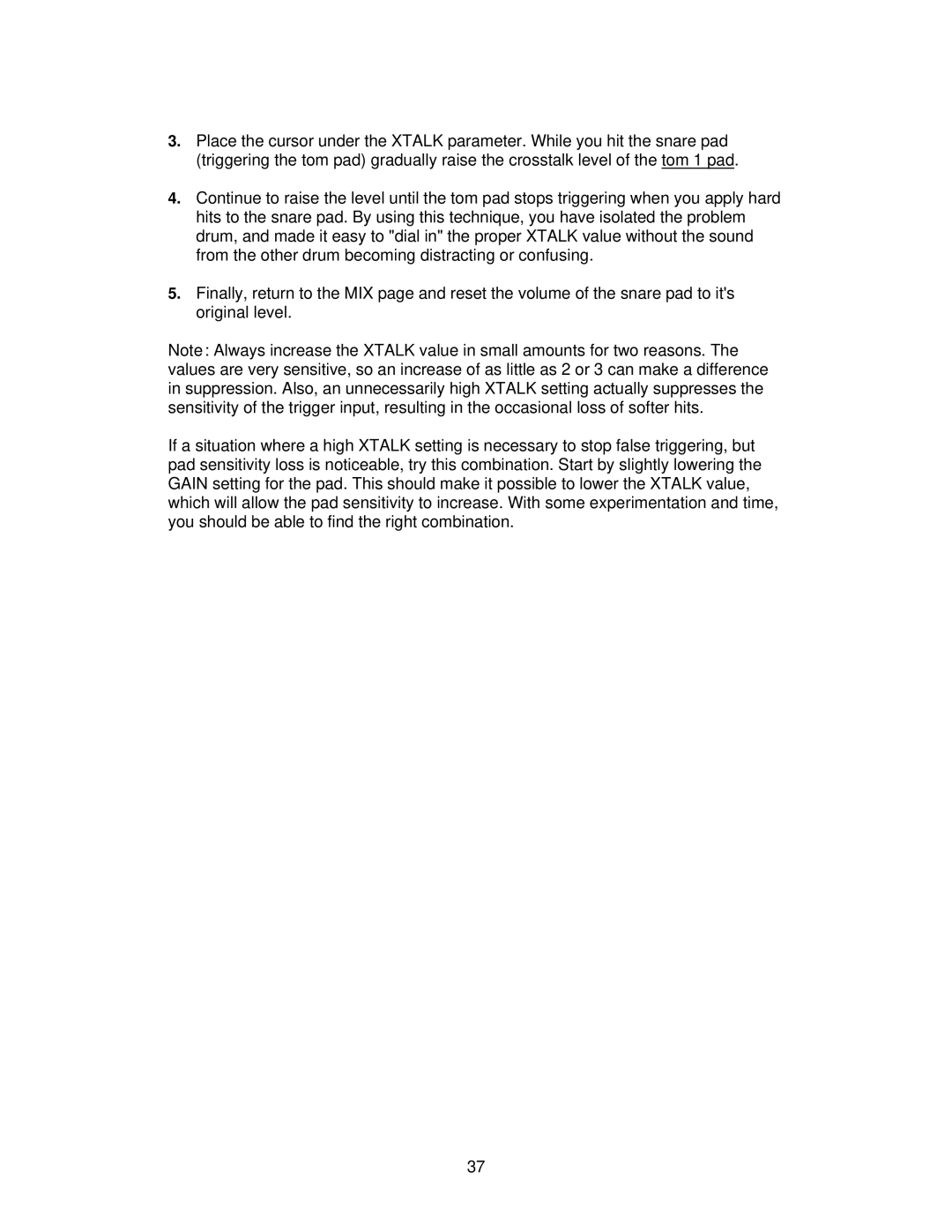3.Place the cursor under the XTALK parameter. While you hit the snare pad (triggering the tom pad) gradually raise the crosstalk level of the tom 1 pad.
4.Continue to raise the level until the tom pad stops triggering when you apply hard hits to the snare pad. By using this technique, you have isolated the problem drum, and made it easy to "dial in" the proper XTALK value without the sound from the other drum becoming distracting or confusing.
5.Finally, return to the MIX page and reset the volume of the snare pad to it's original level.
Note: Always increase the XTALK value in small amounts for two reasons. The values are very sensitive, so an increase of as little as 2 or 3 can make a difference in suppression. Also, an unnecessarily high XTALK setting actually suppresses the sensitivity of the trigger input, resulting in the occasional loss of softer hits.
If a situation where a high XTALK setting is necessary to stop false triggering, but pad sensitivity loss is noticeable, try this combination. Start by slightly lowering the GAIN setting for the pad. This should make it possible to lower the XTALK value, which will allow the pad sensitivity to increase. With some experimentation and time, you should be able to find the right combination.
37
